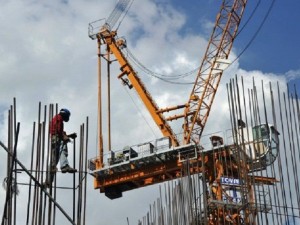Philippine growth slows to anemic 3.7% in 2011
The Philippine economy, as measured by the gross domestic product (GDP), expanded 3.7 percent in 2011, less than half the 7.6-percent growth rate posted in 2010, government officials said Monday.
Romulo A. Virola, National Statistical Coordination Board (NSCB) secretary general, said the country managed to generate the “feeble” growth amid external economic problems, government underspending on infrastructure in the second and third quarters, and the sustained decline in the fisheries subsector.
Socioeconomic Planning
Secretary Cayetano W. Paderanga Jr. said the government sped up infrastructure and program spending toward the end of 2011, making public construction expenditures grow 49.4 percent in the fourth quarter—a marked reversal from the contraction in the previous three quarters.
Article continues after this advertisementPresident Benigno Aquino III, who took power in 2010, sharply restricted state spending last year as part of a high-profile antigraft campaign, seeking to ensure all government contracts were free of corruption before releasing money.
Article continues after this advertisementHowever, he came under some criticism for putting the brakes on the economy as major trading partners the United States, the European Union and Japan suffered from a range of economic woes.
Services, the main growth driver, accounted for more than half of the GDP, the total value of goods produced and services rendered in a given period.
“The strong OFW remittance inflows supported the real estate, rental and business activities subsector, while tourism contributed to the strong performance of the other services subsector,” said Paderanga, also the director general of the National Economic and Development Authority (Neda).
He said it also helped that banks expanded lending.
Drags to growth
Paderanga said “a myriad of external shocks” hit the economy since the beginning of 2011—from the political turmoil in the Middle East and North Africa that drove oil prices higher, the earthquake and tsunami in Japan and flooding in Thailand that disrupted the global supply chain, and the overall weakness of the world economy due largely to anemic European and US economies.
The resulting contraction in exports was the biggest drag on the economy in 2011, which pulled down GDP growth by 2.2 percentage points, the NSCB said.
Public infrastructure underspending and weak government consumption (nonconstruction expenditures) shaved off about 0.7 percentage point and 0.1 percentage point, respectively from the GDP growth.
Typhoons, floods
At the same time, typhoons, flooding and low pressure areas adversely affected agriculture production and damaged infrastructure, cutting GDP growth by 0.4 percentage point.
“Negative events really pulled down growth last year but declines in construction and government spending could have been mitigated by the government itself,” Cid L. Terosa of the University of Asia and the Pacific said in a text message.
Ruperto P. Majuca, Neda assistant director general, told reporters after the briefing that without the negative factors, the GDP could have grown by 7.1 percent in 2011.
Majuca said the Philippines should be able to grow at a faster clip starting 2012 because fiscal reforms, which affected spending in 2011, had been completed and public spending could accelerate.
Paderanga was even optimistic that the Philippine economy would be able to perform well enough to get a credit rating upgrade.
Momentum
He said he expected the economy to “gain momentum” in 2012 with sustained public spending and growth in services, although the government was maintaining the 5- to 6-percent growth rate assumption for the year.
Paderanga said that work on reforming government processes and plugging expenditure leaks had been done and taxes could now be spent efficiently and with a high impact on the economy.
Terosa said growth would likely be higher this year because of government’s greater resolve to buoy the economy through government spending. “About 4 to 5 percent growth is possible,” he said.
Huge capital outlays
Budget Secretary Florencio Abad said a contraction in infrastructure spending had hurt growth in the first three quarters, but he stressed this was offset by huge capital outlays in the final three months of the year.
Abad also noted that the government had already released 72.1 percent of the P150 billion earmarked for infrastructure spending for 2012.
“So it is fair to say that we will have higher spending in the first quarter of this year, providing momentum,” he said.
Cautiously optimistic
Investors remain “cautiously optimistic” of the government’s economic forecast and promise to spend, according to Jonathan Ravelas, chief strategist at BDO Securities.
“Our forecast (for economic growth) this year is 4.5 percent, but this hinges on whether we will see a better growth figure in the first quarter,” Ravelas said.
“It remains to be seen whether the government will plant the seeds of spending today to carry the economic engine forward,” Ravelas said. “Other factors also need to be considered, including the growing uncertainly outside our shores.”
The Aquino administration is targeting an average annual growth of 7 to 8 percent under the Philippine Development Plan 2010-2016 in order to curb poverty and generate “inclusive” growth. With a report from AFP
Originally posted: 3:08 pm | Monday, January 30th, 2012
